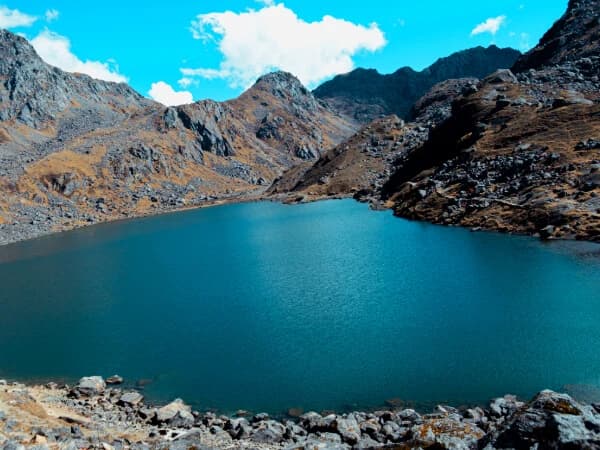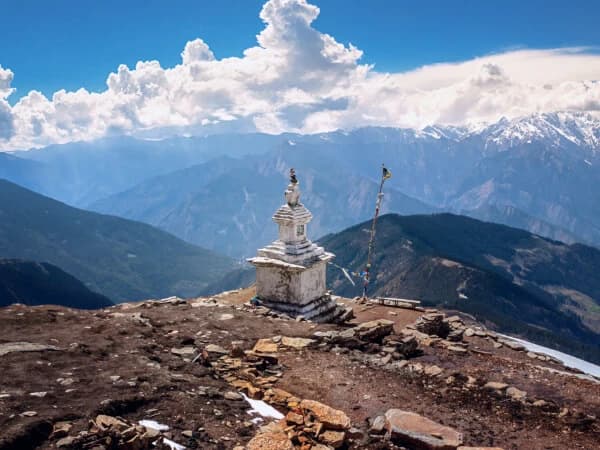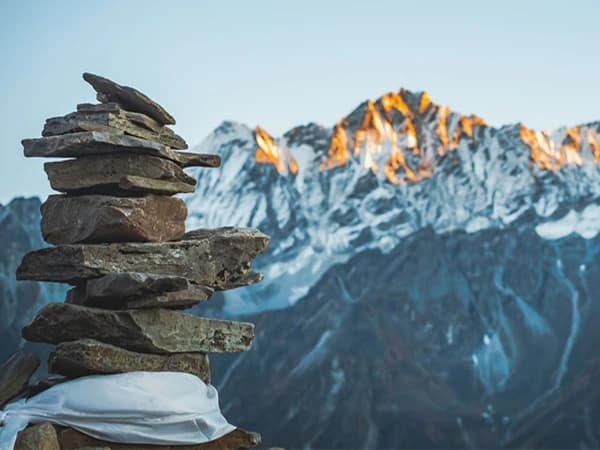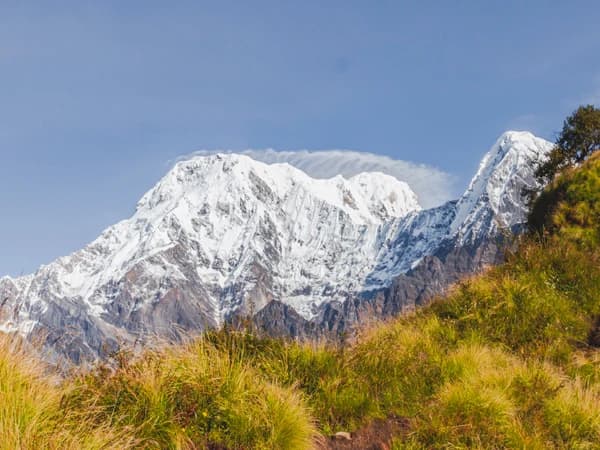Langtang Region Trek with picturesque landscapes and easy trails gives you an interesting adventure experience. The trekking region is just around 8 hours’ drive from Kathmandu.
Trekking in Langtang Region can be a fulfilling experience for the ones who are looking for off the beaten trek, only into nature. Trekking here will give you a different experience than any other tourist destination in the country.
Though the trek is relatively short, you will experience observing more than 1000 plants, 150 species of birds and other mammals in your journey. Trekking in Langtang Region will let you observe various interesting plant species such as Oak, maple and pine and also different species of the rhododendron.
Similarly, during the trek, you will get glimpses of snow leopard, Himalayan black bear, Himalayan Thar, rhesus monkey and many other animals which inhabit here during. Locals here also cite the story yeti sighting but it is not proved still.
Trekking in Langtang Region is easier compared to trekking in Everest Base Camp and Annapurna Base Camp where the footfall is high. The Tamang culture, snow-capped peaks, lakes and awe-inspiring landscapes of this region makes a deep impression in your heart forever.
Langtang Valley Region is protected by Langtang National Park covering three districts of Nepal—Nuwakot, Rasuwa, and Sindhupalchowk. The park covers an area of 1,710 square kilometers. The protected area is linked with Qomolangma National Nature Preserve of Tibet.
During the Langtang Region trekking, you will walk in the region enriched with around 70 glaciers and high altitude lakes Gosaikunda and Parvatikunda.
Gosainkunda Lake, a sacred pilgrimage site of Hindu is a popular destination of Langtang Region. More than 100,000 pilgrims visit this place during full moon day of August ‘Janai Purnima’ every year.
Furthermore, Kyanjin Gompa is another popular Buddhist pilgrimage site of Langtang Region.
The splendid view and beautiful landscapes of Gangchenpo, Gur Karpo Ri, Lingshing, Loenpo Gang and Dorje Lakpa at Tharepati will penetrate your heart.
Welcoming nature of the native Tamangs, tranquil lakes and spectacular landscapes of Langtang Valley will stick in your heart. Langtang Region, located in the north of Kathmandu Valley borders Tibet, Autonomous Region of China. The inhabitants of this region are Tamangs and Tibetans from Kerung. The residents here are sheep and yak herders engaged in trade with Kerung in Tibet.
More than 100,000 foreigners pay their visit here to experience natural beauty.
Highlights of the Langtang Region
- Stunning Mountain Views: Breathtaking vistas of Langtang Lirung, Ganesh Himal, and Dorje Lakpa.
- Cultural Immersion: Experience the rich Tamang and Sherpa cultures through traditional villages and homestays.
- Sacred Sites: Visit Kyanjin Gompa, Gosaikunda Lake, and other spiritually significant locations.
- Diverse Landscapes: Trek through rhododendron forests, alpine meadows, and high-altitude deserts.
- Wildlife Encounters: Spot rare species like the red panda, Himalayan black bear, and various bird species.
- Accessible Trekking Routes: Easily reachable from Kathmandu, offering a variety of treks for different skill levels.
- Tranquil Environment: Enjoy less crowded trails compared to the more popular trekking regions in Nepal.
- Combination Treks: Opportunity to combine Langtang Valley, Gosaikunda, and Helambu for an extended trekking experience.
- Remote Beauty: Explore less-visited areas like Panch Pokhari and Ganesh Himal for a more secluded adventure.
What Makes Langtang Region Trekking Special?
Scenic Beauty
Scenic beauty is one of the standout features of Langtang. Trekkers are treated to breathtaking views of snow-capped peaks such as Langtang Lirung (7,227 meters), Ganesh Himal, and Dorje Lakpa. The trails wind through lush rhododendron forests, alpine meadows, and picturesque villages, offering a diverse range of landscapes in a compact area.
Key Takeaways:
- Langtang Lirung offers a dramatic backdrop throughout the trek.
- Alpine meadows bloom with flowers in spring.
- Rhododendron forests add vibrant colors to the trails.
Cultural Richness
Cultural richness defines the Langtang trekking experience. The region is predominantly inhabited by the Tamang people, an ethnic group with Tibetan roots. Trekking through Tamang villages gives you a glimpse into their traditional way of life, which has remained largely unchanged for centuries. You'll encounter Buddhist monasteries, prayer wheels, and mani walls that speak to the deep spiritual connection of the locals with their land.
Key Takeaways:
- Tamang villages offer an authentic cultural experience.
- Buddhist monasteries and prayer flags are common along the trails.
- Local homestays provide an opportunity to immerse yourself in Tamang culture.
Accessibility
Accessibility is another reason why Langtang is an attractive trekking destination. Unlike more remote regions like Everest or Dolpo, Langtang is easily reachable from Kathmandu. A short drive of around 7-8 hours brings you to the trailhead, making it a convenient option for those with limited time.
Key Takeaways:
- Short travel time from Kathmandu to the trailhead.
- No need for domestic flights, reducing overall travel costs.
- Ideal for trekkers with tight schedules.
Wildlife Encounters
Wildlife encounters in Langtang add an extra layer of excitement to the trek. The Langtang National Park is home to a variety of wildlife, including the elusive red panda, Himalayan black bear, and numerous bird species. Trekking through the park offers a chance to spot these animals in their natural habitat.
Key Takeaways:
- Red pandas are a rare but thrilling sight.
- Birdwatchers can enjoy spotting various species in the park.
- The region's biodiversity adds to the trekking experience.









